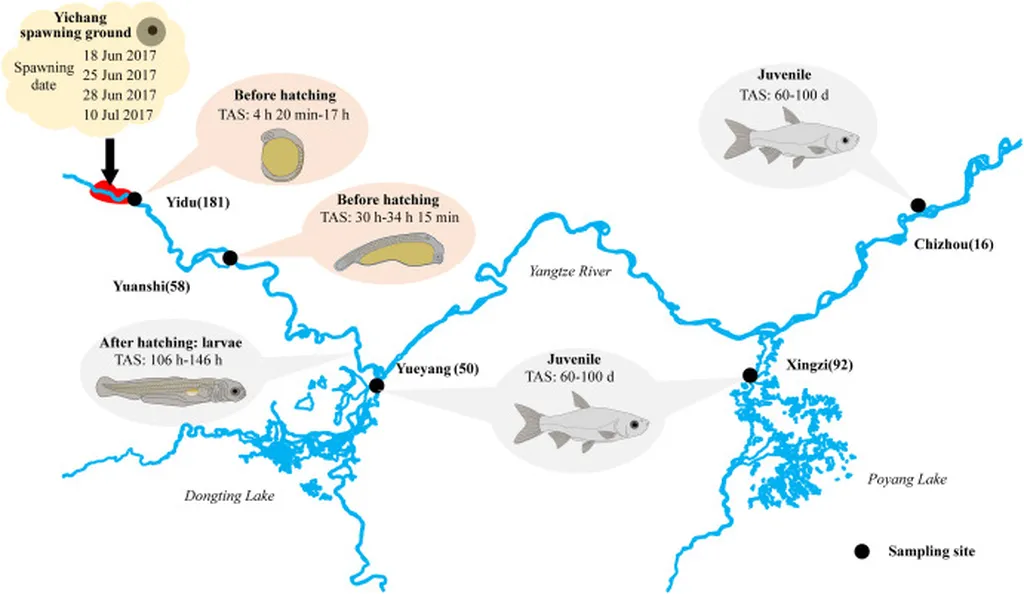In the vast and winding expanse of the Yangtze River, a remarkable phenomenon has been uncovered that could reshape our understanding of fish dispersal and potentially influence freshwater fisheries management and aquaculture practices. Researchers, led by Ping Yang from the State Key Laboratory of Breeding Biotechnology and Sustainable Aquaculture at the Chinese Academy of Sciences, have discovered that silver carp (Hypophthalmichthys molitrix) exhibit long-distance dispersal with kinship during their early life stages, a behavior previously observed in marine fishes but not in inland waters.
The study, published in the journal *Water Biology and Security* (translated as *Water Life and Security*), analyzed the genetic data of 397 eggs and juvenile silver carp collected from various sites along the middle and lower reaches of the Yangtze River. The findings revealed that these young fish, some as far as 1047.2 kilometers from the spawning ground, were often closely related, indicating that they dispersed together with their kin.
“This kin aggregation suggests that silver carp may benefit from staying together during their early life stages, possibly for foraging, defense, or other fitness advantages,” explained Ping Yang. The researchers found that the proportion of maternal siblings was significantly higher than random, underscoring the importance of kinship in these dispersal patterns.
The implications of this research are profound. Understanding how and why these fish disperse with their kin can provide valuable insights into their early life history and population dynamics. This knowledge could inform more effective conservation strategies and fisheries management practices, particularly in the Yangtze River basin, which is a critical habitat for numerous species.
“Our findings suggest that preserving and restoring habitats along the middle Yangtze River is crucial,” said Ping Yang. “We recommend rebuilding channelized river banks with more heterogeneous habitats and restoring lake-river connections to expand the amount of suitable habitat for these fish.”
From a commercial perspective, this research could have significant impacts on the aquaculture industry. Silver carp is a commercially important species, widely cultivated for its use in aquaculture and as a biological control agent for algae. Understanding their dispersal patterns and kinship behaviors could lead to more efficient and sustainable aquaculture practices, ultimately benefiting the industry and the environment.
Moreover, the study highlights the importance of genetic analysis in fisheries management. By utilizing microsatellite genotype data, researchers can gain a deeper understanding of fish populations and their behaviors, paving the way for more informed decision-making in conservation and fisheries management.
As we continue to explore the intricate behaviors of freshwater fish, this research serves as a reminder of the complex and fascinating world beneath the water’s surface. It also underscores the need for continued investment in scientific research and conservation efforts to protect and preserve our valuable aquatic resources.
In the words of Ping Yang, “This study is just the beginning. There is still much to learn about the early life stages of freshwater fish and their dispersal patterns. But with each discovery, we take a step closer to understanding and protecting these vital ecosystems.”

